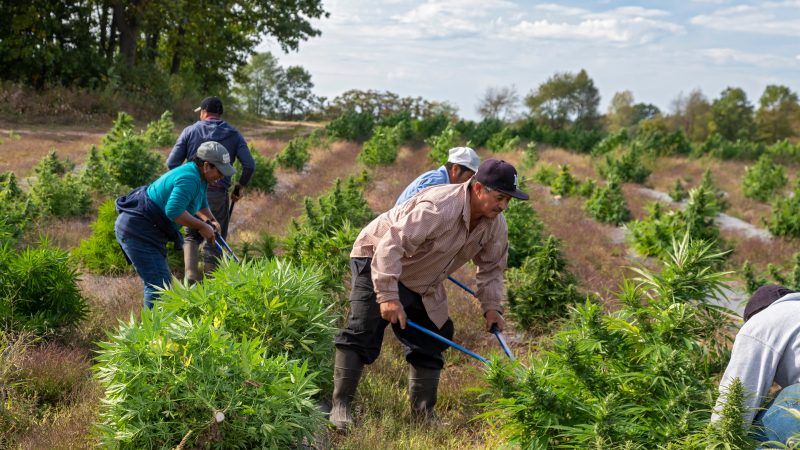Proposed Hemp Regulations Would Be a Nightmare for Farmers
"I would have to grow at least three times as many plants under the USDA rule to produce the same amount of CBD as I get out of one plant now."

The federal government is considering various regulations on the commercial harvesting of hemp, and hemp farmers are none too thrilled.
The U.S. Department of Agriculture (USDA) released an interim rule last October, nearly 11 months after 2018 Farm Bill legalized the production of industrial hemp. The rules dictate that hemp farmers must harvest within 15 days of testing their crop for THC. Farmers must then take samples from the top of the plant, where THC levels are the highest, and send them to a certified Drug Enforcement Administration (DEA) lab.
Under federal and most state regulations, cannabis plants with a THC level of 0.3 percent or lower are considered hemp. Crops that test above 0.3 percent for THC combined with THCA, a nonpsychoactive component of the plant, must be destroyed. Farmers whose crops repeatedly test above 0.5 percent could be suspended from growing hemp altogether.
In an attempt to gauge more feedback, the USDA extended its public comment period until the end of January. Many farmers expressed their skepticism about the pending regulations.
"The 0.3 percent limit is fine if you give 30-40 days to harvest afterward," wrote Minnesotan hemp farmer Jeremy Sauerssig. "The 15 days is fine if you raise the total THC limitations." He doubted that these requirements can work for any geographical location.
Susan Corbett from Virginia suggested that the USDA raise the THC limit to 1 percent. "No one is getting high on 1% THC," she said. "That latitude will allow farmers to grow plants with 16% to 18% CBD, making this very stressful and labor-intensive crop worth the effort."
There is also confusion about whether the 15-day rule marks the beginning or end of the harvest period. Some hemp fields take multiple days to harvest, so they could miss the 15-day window even if they began cultivation before the allotted time. THC concentration typically increases as plants mature, so a crop could potentially rise above the threshold if the testing process isn't completed early enough in those 15 days.
"I would have to grow at least three times as many plants under the USDA rule to produce the same amount of CBD as I get out of one plant now," said Dennis Kulesza of Vermont.
"A reasonable and viable solution," Kulesza noted, "would be to allow certified testing laboratories to extract any THC-A from a crop when it is processed and turn it over to medical marijuana facilities such as hospitals and dispensaries."
The proposed rules also complicate states' plans. The Kentucky Department of Agriculture has now been urged by the Kentucky Hemp Industries Association to stick with the rules outlined in its 2014 hemp research pilot program until the USDA's requirements are further clarified. "Maintaining the pilot program while these issues are addressed will help stabilize Kentucky's hemp program, give the farmers some certainty, and promote much needed rural economic development," said Jane Groda, the vice president of the organization.
South Carolina Commissioner of Agriculture Hugh Weathers asked U.S. Secretary of Agriculture Sonny Perdue to reconsider the testing requirements. "We believe that several provisions in the interim final rule lack the flexibility necessary for our farmers to be profitable and for SCDA to be able to implement a successful hemp program," Weathers said.
The USDA ought to listen closely lest these regulations kill a promising new industry.
